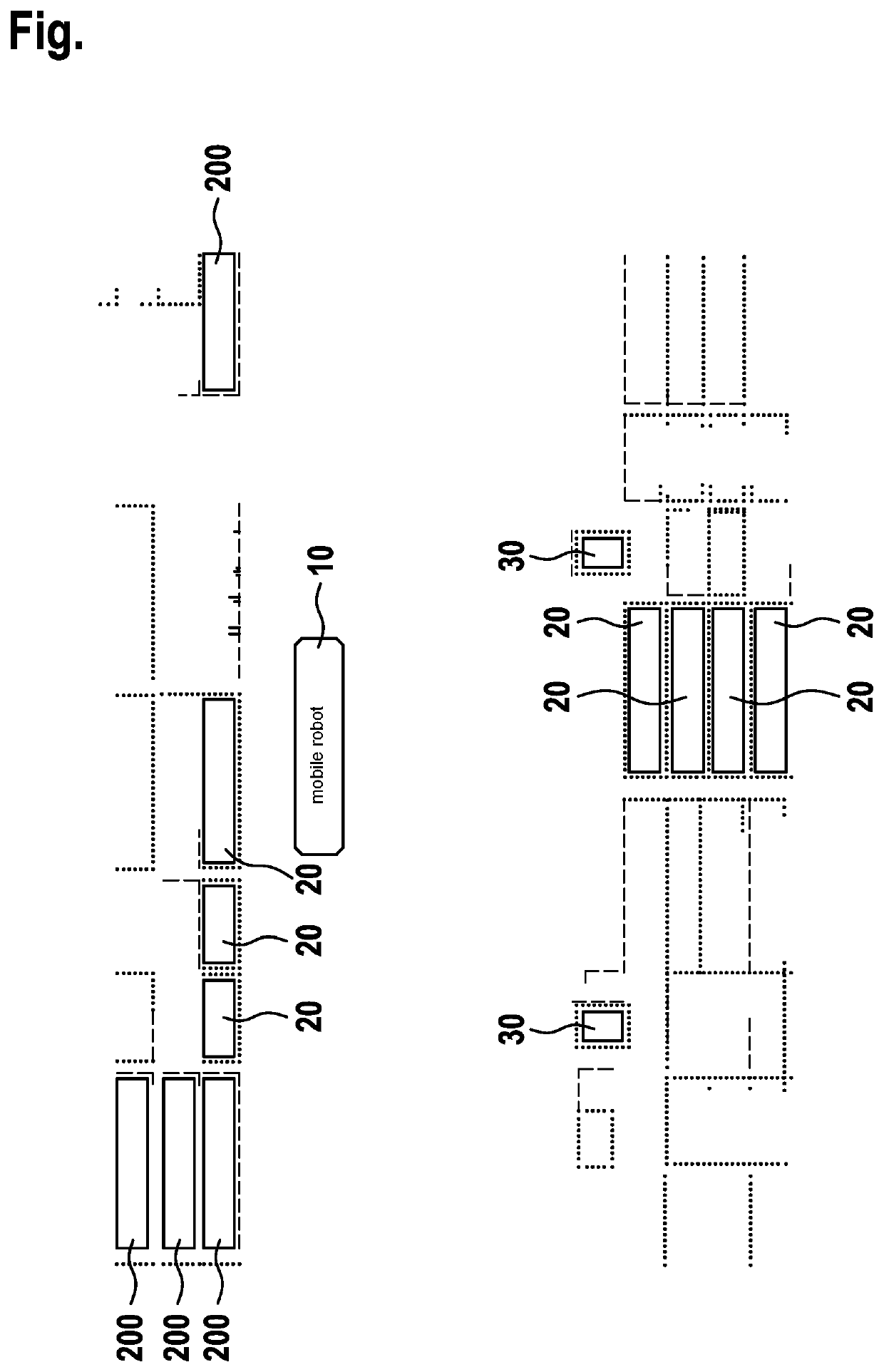Method for creating a surroundings map for use in the autonomous navigation of a mobile robot
a mobile robot and surroundings technology, applied in the direction of navigation instruments, instruments, process and machine control, etc., can solve the problems of difficult creation of a permanent map based on a surroundings representation, inability to conventionally navigate autonomous transport robots in the logistics setting, for example in a port facility, and inability to achieve the effect of avoiding the formation of a permanent map
- Summary
- Abstract
- Description
- Claims
- Application Information
AI Technical Summary
Benefits of technology
Problems solved by technology
Method used
Image
Examples
Embodiment Construction
[0020]The FIGURE illustrates the problem of localizing an autonomously navigating mobile robot 10 in a port facility. The port facility is characterized by changing surroundings, which is caused by a continuous repositioning of containers 20, 200. The scene illustrated schematically in the FIGURE is based, in principle, on a conventional method, according to which mobile robot 10 is localized in the port surroundings with the aid of a static map, for example in the form of a point cloud (points in an original LIDAR map), which is represented by dotted lines. Mobile robot 10 is equipped with, for example, laser scanners, and generates a laser scan (instantaneously measured LIDAR points), represented here by dashed lines. Alternatively or additionally, however, other sensors, for example cameras, may be used at mobile robot 10 for the localization. The localization and the navigation based thereon take place with the aid of a so-called scan matching. The instantaneous position and ori...
PUM
 Login to View More
Login to View More Abstract
Description
Claims
Application Information
 Login to View More
Login to View More - R&D
- Intellectual Property
- Life Sciences
- Materials
- Tech Scout
- Unparalleled Data Quality
- Higher Quality Content
- 60% Fewer Hallucinations
Browse by: Latest US Patents, China's latest patents, Technical Efficacy Thesaurus, Application Domain, Technology Topic, Popular Technical Reports.
© 2025 PatSnap. All rights reserved.Legal|Privacy policy|Modern Slavery Act Transparency Statement|Sitemap|About US| Contact US: help@patsnap.com

